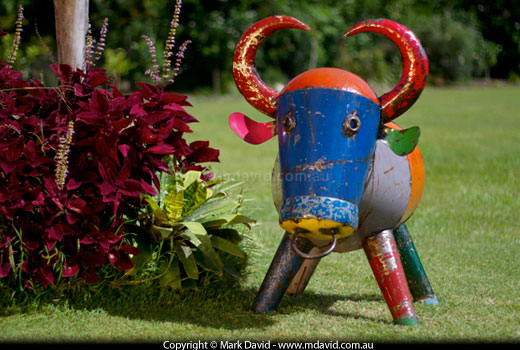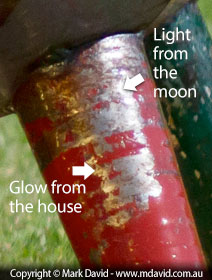
This photo (below) was taken at night time, using the light from a full moon! I needed a torch to see what I was doing but I was still able to take this shot.
Previous tip | Next tip

You see, moonlight is just sunlight. Sunlight reflected off the moon. It’s just that there’s not very much of it.
I used a tripod and cable release to keep everything very still, and the biggest aperture (smallest f-number) my lens could handle. With the 50mm lens I was using that meant f/1.8. ISO was set at 400. I selected Bulb mode - that’s the ‘B’ setting that makes the shutter stay open for as long as you hold the shutter button down. After a few experiments I found that 11-seconds was the correct exposure.

Most of the time, night time photos lack the rich warm tones that you see here. So what was the secret in this shot? When I took this photo, a house nearby had some lights on, and the slightly golden glow coming from that house was enough to warm up the colours in the foreground. In fact, if you look carefully at the bull’s red leg you can see two streaks of specular highlights — a white one from the moonlight and a golden one from the glow coming from the house. The golden light wasn’t strong enough to cast a shadow but it was enough to warm up some colours.
When you take these kinds of shots, prepare for black skies to come out looking light blue like daylight skies, except with stars in them!
One more thing about night time photography: if there’s even the slightest breeze, the long exposures will result in trees and clouds looking fuzzy from motion blur.
A few words of warning though if you want to try this: be careful with your camera gear at night (or any other time) if it’s much colder outside than inside. Bringing cold camera gear back into a warm, humid house can cause potentially damaging condensation to form on internal circuitry and on the sensor. So if you do bring a cold camera into a warm, humid house then seal it into a plastic bag and only allow it to warm up slowly.
I also personally wonder about extremely long exposures causing the sensor to warm up a lot. For that reason, if my exposures need to go longer than about half a minute then I simply increase the ISO, and I always use the biggest aperture my lens can manage, to make the exposure times as short as possible.








